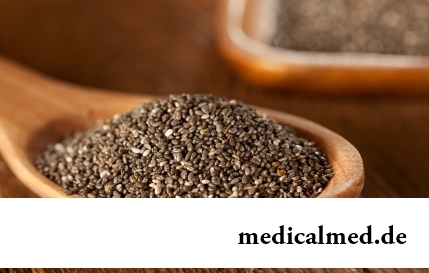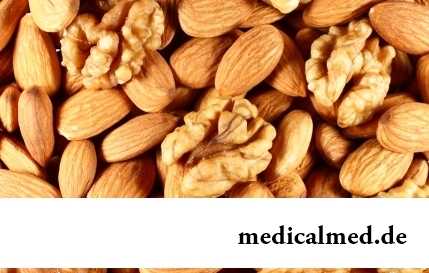





Clemastinum
Application instruction:
Clemastinum – medicine of the expressed antipruritic and antiallergic action, a blocker histamine H1 receptors.
Form of release and structure
Dosage form of Clemastinum – a tablet: flat, round, 7 mm in the diameter, almost white or white color, on one of the parties – a notch (on 10 pieces in blisters, 2 blisters in a cardboard pack).
Structure of 1 tablet:
- Active ingredient: Clemastinum (in the form of a fumarat) – 1 mg;
- Auxiliary components: monohydrate of lactose, talc, corn starch, magnesium stearate.
Indications to use
- Pruritic dermatosis;
- Skin itch;
- Contact dermatitis;
- Small tortoiseshell;
- Acute and chronic eczema;
- The reactions connected with stings of insects;
- Rhinopathies of allergic genesis;
- Hay fever.
Contraindications
Absolute:
- Diseases of lower parts of respiratory tracts (including bronchial asthma);
- Lactation period;
- Children's age till 1 year;
- Use along with monoamine oxidase inhibitors (MAO);
- Hypersensitivity to Clemastinum components, and also to other blockers histamine H1 receptors.
Relative (drug is taken with caution in connection with the increased probability of side effects):
- Closed-angle glaucoma;
- The stenosing stomach ulcer;
- The obstructive phenomena in peloric and duodenal areas;
- The prostatauxe which is followed by disturbances of an urination;
- The obstructive phenomena in a bladder neck;
- Children's age up to 6 years.
At pregnancy it is possible to use Clemastinum only according to vital indications.
Route of administration and dosage
Pill is taken inside.
The recommended dosing mode depending on age:
- Adults and children are more senior than 12 years: on 1 mg 2 times a day, in the morning and in the evening; in case of need about 6 mg are allowed to increase a daily dose;
- Children aged from 6 up to 12 years: on 0,5-1 mg 2 times a day.
Side effects
- Central Nervous System (CNS): drowsiness, feeling of fatigue; seldom – a tremor, dizziness; in isolated cases (it is preferential at children) – a promoting effect on TsNS;
- Alimentary system: the dispeptic phenomena, including nausea, pains in epigastriums, vomiting, a lock, dryness in a mouth; in isolated cases – diarrhea, anorexia;
- Cardiovascular system (CCC): seldom – a lowering of arterial pressure (it is preferential at elderly patients), premature ventricular contraction, heartbeat;
- Urinary system: seldom – a dysuria;
- Respiratory system: seldom – a condensation of a bronchial secret with difficulty of department of a phlegm;
- Dermatological reactions: seldom – a photosensitization;
- Allergic answers: seldom – urticaria, skin rash;
- Others: seldom – feeling of squeezing in a thorax.
Special instructions
It is not necessary to apply Clemastinum at the same time with somnolent medicines and/or alcohol.
Drug exerts impact on concentration of attention and speed of psychomotor reactions therefore during therapy it is not recommended to work with difficult mechanisms and to manage motor transport.
Medicinal interaction
Clemastinum in case of simultaneous use has exponential effect on medicines, the oppressing TsNS (sedative, somnolent, tranquilizers), and also on ethanol and etanolsoderzhashchy drugs.
Terms and storage conditions
To store in the place unavailable to children, at a temperature of 15-25 °C.
Period of validity – 4 years.
Human bones are stronger than concrete four times.

Practice of use of table salt in the therapeutic purposes contains not one century. Appl are considered especially effective...
Section: Articles about health
The sudden heat on all body which is followed by perspiration and a cardiopalmus – the phenomenon familiar to many people. Most often such states called by "inflows" result from nervous or physical overworks and disappear right after rest. Odn...
Section: Articles about health
Zone hypostases under eyes - very widespread problem giving to people is a lot of inconvenience. Hypodermic fabric in these parts has very loose structure and almost does not contain collagenic fibers. Besides, the skin covering подглазья constantly is exposed to compression and stretching when the person blinks, blinks, etc. These features also create premises for emergence of the so-called bags which are giving to the face a tired and sickly look, and also visually adding increased...
Section: Articles about health
The summer of this year in Russia was very ambiguous. Regions suffered from a merciless heat, from pouring rains, from times...
Section: Articles about health
Scientists have no unambiguous opinion on a proximate cause of emergence of a carcinoma cutaneum today. Only the factors promoting development of this illness are precisely established. Treat them: long impact on skin of ultraviolet rays, radioactive...
Section: Articles about health
All diseases from nerves – in this joke a big element of truth, are said by doctors. Constant stresses lead to decrease in protective forces of an organism, and it becomes vulnerable for a set of diseases. It is wrong to think that the stress is a problem of the present. Life of people and hundred, and one thousand years ago also abounded with problems therefore need of a relaxation understood in ancient times – to some techniques more than one thousand years. The person needs knowledge of how it is possible to relax, this knowledge пригод...
Section: Articles about health
Each woman has preferences in the field of use of those goods which help us to look good, feel се...
Section: Articles about health
The problem of diagnosis was and remains to one of the most important in medicine. From that, the reason of an indisposition of the patient will be how precisely defined, eventually success of treatment depends. In spite of the fact that the majority of the diagnostic methods applied in about...
Section: Articles about health
The main role in development of a peptic ulcer of a stomach and duodenum the bacterium Helikobakter plays pilor. Activity and the strengthened reproduction of this microorganism lead to weakening of protection of mucous membranes and their erosive damage. Displays of an illness seriously reduce quality of life: patients regularly test attacks of severe pain, heartburn, nausea. On this background also psychoemotional malfunctions develop: a kidney-vetch, as a rule, shows an acrimony, ча...
Section: Articles about health
The brain of the person is studied not one hundred years, but the quantity of the riddles connected with this body increases rather, than reducing...
Section: Articles about health
The endocrine system carries out extremely important role in a human body, practically all processes of life activity are regulated by it. Closed glands (hemadens) produce special biologically active agents – hormones which then o...
Section: Articles about health
Water with a lemon - idle time in preparation drink which supporters of a healthy lifestyle already managed to appreciate. Used in a warm look and on an empty stomach, it is one of the most useful prophylactics allowing to prevent tens of diseases and just to raise an organism tone. Especially effectively to use warm water with lemon juice after a serious illness, during a season of the colds, and also to children, old men and pregnant women which do not have contraindications...
Section: Articles about health
According to doctors, more than a half of men of 25-50 years suffer from frustration of the urinogenital sphere, but sees a doctor from them меньшинс...
Section: Articles about health
Visit of doctors – business not the most pleasant, and many people do not hurry to undergo necessary planned inspections. Such behavior is extremely thoughtless and improvident. Our health is necessary not only to us: wellbeing of darlings, children, grandsons and престар...
Section: Articles about health
The chia plant, or the Spanish sage, is from South America. The indigenous people of the continent since ancient times used its seeds in food: small, but very nutritious kernels, in a form the reminding fasolina. Indians knew about useful properties of seeds of a chia, and applied them to maintenance of vitality and increase in endurance before serious exercise stresses....
Section: Articles about health
Popular joke that there are no healthy people, and is nedoobsledovanny, most of us considers an honest truth, and put that...
Section: Articles about health
Run - one of the most available and effective ways to revitalize the organism. Knowing about its extraordinary advantage, each of us at least once tried to make jogs, but only the few made these occupations regular. In spite of the fact that in jogging (easy an ozdor...
Section: Articles about health
The name of this disease precisely reflects the problem reason: it consists in the bra fastener pressure upon a certain zone of a back. At the same time one of vertebrae of chest department of a backbone is as if blocked and loses mobility, and the loading falling on it is distributed on the next vertebrae. At 70-80% of women local pains in a backbone point on which the fastener of the often put most on bra presses result....
Section: Articles about health
For the last decades the diabetes mellitus of the second type became really world problem. Number of cases annually cart...
Section: Articles about health
The words "disease" and "patient" not without reason come from one root – "pain". As a rule, symptoms of illnesses thoroughly spoil to patients life. However from this rule there are exceptions. Some diseases are shown by signs which can cause even полож...
Section: Articles about health
It seems, quite recently you brought the baby from maternity hospital, but time flew by, and here it is already going to join the first in life children's collective. How to prepare the child for visit of a garden? What needs to teach him to facilitate adaptation process? What to tell and how to behave that the kid transferred changes in the life without serious consequences? Let's try to find answers to these questions....
Section: Articles about health
Statistically, in Russia about 34% of citizens smoke. Most of consumers of tobacco has problems about health sooner or later...
Section: Articles about health
Bathing in broths of medical flowers and plants (phytobathtub) was eurysynusic since Cleopatra who is a good judge in all that concerns beauty and health. And today phytobathtubs is the simple and available means allowing not only to remove nervous N...
Section: Articles about health
The phenomenon of the panic attack is known long ago, but the reasons of its emergence still are up to the end not found out. It is established that more than 30% of people at least once in life become the victims of very unpleasant phenomenon: without everyones on that the reasons they have a feeling of horror which is followed by a cardiopalmus, a shiver and the fever or feeling of sudden heat increased by sweating, breath constraint, dizziness, nausea....
Section: Articles about health
One of the major chemical processes happening in a human body are oxidation reactions. They go with participation of fats...
Section: Articles about health
Tea is loved and use almost everything. This drink has tonic properties, contains the tannins capable to suppress activity of causative organisms. Recently great popularity was gained by teas with vegetable additives. Лечеб...
Section: Articles about health
Each person has easy indispositions which he transfers "standing", trying not to ask for medical care. Arguments at the same time are adduced same: "it is a trifle, itself will pass", "I have too many important issues", "there are no wish to spend time for doctors", etc. At good shape of health, normal working capacity and lack of suspiciousness dislike for complaints to such problems is quite natural. It is not the most correct, but very widespread type of behavior. I am glad...
Section: Articles about health
